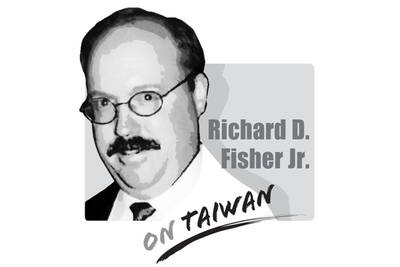In recent years, advertisements about shingles — a viral disease, also known as herpes zoster or zona — and human papillomavirus (HPV) have been broadcast widely on television, often featuring unsettling images.
When my wife urged me to get the shingles vaccine last year, I learned that one dose costs NT$8,500. It requires a second dose after three months, bringing the total cost of complete vaccination to NT$17,000. Even for a high-risk, elderly individual over 70 years of age like myself, there is no government subsidy. It is no wonder that I rarely hear of elderly friends or family getting the vaccine — it is too expensive.
The HPV vaccine is reportedly available for free at school for middle school students, but it is also possible for adults to contract the virus. One dose costs between NT$3,000 and NT$4,000 — certainly enough to discourage low to middle-income households from getting vaccinated.
The government has already implemented public subsidies for many vaccines. Considering how terrifying the ads encouraging shingles and HPV shots are, the government should introduce partial subsidies to encourage the public to get vaccinated. It would be a shame if the vaccines are wasted because they eventually expire and need to be destroyed.
Wang Hsi-chang is a writer.
Translated by Kyra Gustavsen

On Sept. 3 in Tiananmen Square, the Chinese Communist Party (CCP) and the People’s Liberation Army (PLA) rolled out a parade of new weapons in PLA service that threaten Taiwan — some of that Taiwan is addressing with added and new military investments and some of which it cannot, having to rely on the initiative of allies like the United States. The CCP’s goal of replacing US leadership on the global stage was advanced by the military parade, but also by China hosting in Tianjin an August 31-Sept. 1 summit of the Shanghai Cooperation Organization (SCO), which since 2001 has specialized
In an article published by the Harvard Kennedy School, renowned historian of modern China Rana Mitter used a structured question-and-answer format to deepen the understanding of the relationship between Taiwan and China. Mitter highlights the differences between the repressive and authoritarian People’s Republic of China and the vibrant democracy that exists in Taiwan, saying that Taiwan and China “have had an interconnected relationship that has been both close and contentious at times.” However, his description of the history — before and after 1945 — contains significant flaws. First, he writes that “Taiwan was always broadly regarded by the imperial dynasties of
The Chinese Communist Party (CCP) will stop at nothing to weaken Taiwan’s sovereignty, going as far as to create complete falsehoods. That the People’s Republic of China (PRC) has never ruled Taiwan is an objective fact. To refute this, Beijing has tried to assert “jurisdiction” over Taiwan, pointing to its military exercises around the nation as “proof.” That is an outright lie: If the PRC had jurisdiction over Taiwan, it could simply have issued decrees. Instead, it needs to perform a show of force around the nation to demonstrate its fantasy. Its actions prove the exact opposite of its assertions. A
A large part of the discourse about Taiwan as a sovereign, independent nation has centered on conventions of international law and international agreements between outside powers — such as between the US, UK, Russia, the Republic of China (ROC) and Japan at the end of World War II, and between the US and the People’s Republic of China (PRC) since recognition of the PRC as the sole representative of China at the UN. Internationally, the narrative on the PRC and Taiwan has changed considerably since the days of the first term of former president Chen Shui-bian (陳水扁) of the Democratic